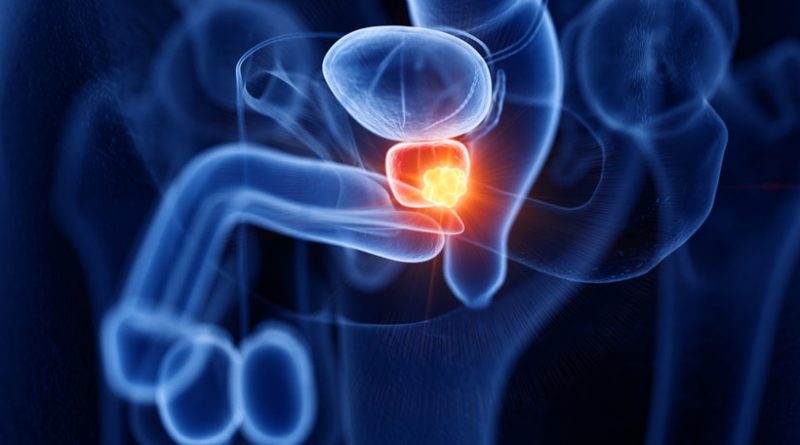Empower Your Prostate
In the realm of prostate health, dietary fortification emerges as an important shield against potential risks like cancer. Nutrients such as lycopene and selenium play a crucial role in promoting prostate well-being. Complementing this, advanced medical interventions, spanning screening and treatment options, surgical procedures, and radiation therapies, collectively form a holistic defence against prostate ailments….
By Dr S P Yadav
If you are experiencing symptoms like difficulty urinating, a weakened stream of urine, blood in the urine or semen, bone pain, unintended weight loss, or erectile dysfunction, it’s crucial to consult with your doctor, as these could be signs of prostate cancer.
Basically, prostate cancer begins when cells in the prostate gland start to grow out of control. The prostate is a gland found only in males. It makes some of the fluid that is part of semen. The prostate is below the bladder (the hollow organ where urine is stored) and in front of the rectum (the last part of the intestines).
Basic factors that can increase the risk of prostate cancer include older age (most common after age 50). It is reported that black people have a greater risk of prostate cancer than do people of other races. In black people, prostate cancer is also more likely to be aggressive or advanced. If a blood relative, such as a parent, sibling, or child, has been diagnosed with prostate cancer, the risk may be increased. People who are obese may have a higher risk of prostate cancer compared with people considered to have a healthy weight, though studies have had mixed results.
Understanding the Prostate’s Anatomy
The prostate, located in front of the rectum and at the base of the bladder surrounding the urethra (the urinary outlet), is normally about the size of a walnut, weighing around 20 grams in a typical adult. It naturally enlarges with age, a condition known as Benign Prostatic Hyperplasia (BPH) or Lower Urinary Tract Symptoms (LUTS). However, if it grows too large, it can cause problems. This non-cancerous enlargement is common in males over 50.
Prostate cancer, distinct from BPH, is often seen in men after 60 years of age. It is the second most common cancer in men (after lung cancer) and the second major cause of death for elderly men. 1 in 5 men get diagnosed with prostate cancer during their lifetime.
Detecting Prostate Cancer
Early stages of prostate cancer often show no symptoms, leaving many men unaware of their condition. Indications of prostatic issues include increased frequency of urination, urgent and unavoidable urges to urinate, straining to empty the bladder, hesitancy with a weak urine stream, a persistent feeling of incomplete emptying even after urination, burning/pain during urination (dysuria), dribbling of urine after voiding, blood in urine (hematuria), nocturia (frequent urination at night), and/or uncontrolled outflow of urine.
The early symptoms of BPH and prostate cancer mirror each other, as they are not specific to cancer but arise due to blockage from cancerous growth in prostate cancer patients and the enlargement of prostate tissue in BPH cases.
Advanced prostate cancer may manifest as dull, deep pain or stiffness in the pelvis, lower back, ribs, or upper thighs; pain in the bones of these areas; weight loss, loss of appetite, fatigue, nausea, or vomiting; swelling in the lower extremities; and weakness or paralysis in the lower limbs, often accompanied by constipation. Diagnosis of prostate cancer may be based on symptoms, physical examination, prostate-specific antigen (PSA) levels, or biopsy. Treatment typically involves surgery, various forms of radiation therapy, proton therapy, or cryosurgery. Hormonal therapy and chemotherapy are generally reserved for advanced cases.
Dietary Measures and Treatment Insights
For prostate cancer prevention, dietary changes are often recommended to maintain good prostate health. Lycopene, found in foods like tomatoes, tomato products, and watermelons, along with selenium from nuts, seafood, meat, fish, wheat bran, oats, and brown rice, can significantly reduce the risk of prostate cancer. Vegetables such as broccoli, cabbage, and cauliflower contain isothiocyanates, protective phytochemicals, and antioxidants. Fish and vegetable oils rich in omega-3 fats are also effective, while vitamin E, sourced from vegetable oils, nuts and seeds, whole grains, etc, is known to reduce prostate inflammation.
A study involving nearly 50,000 men found that lycopene significantly reduces the risk of prostate cancer. Selenium offers great protection, and soy products, containing isoflavones, can help prevent prostate enlargement and may slow tumour growth by lowering dihydrotestosterone (DHT), a male hormone stimulating prostate tissue overgrowth.
However, red meat, high in saturated animal fats, has been linked to an increased incidence of prostate problems. Excessive weight is also associated with prostate troubles. Individuals with an enlarged prostate are advised to drink plenty of water and non-alcoholic fluids to flush the bladder, while reducing caffeine and beer intake as they can irritate the urinary tract. Screening decisions are recommended based on discussions with healthcare providers about uncertainties, risks, and potential benefits. The American Cancer Society (ACS) suggests screening from age 50 for men at average risk with a 10-year life expectancy. For African Americans and men with a first-degree relative diagnosed with prostate cancer before age 65, screening may start at age 40 or 45. For men with several first-degree relatives diagnosed with prostate cancer at an early age, screening may commence at 40.
Standard treatments for clinically localised prostate cancer include radical prostatectomy, radiation therapy, active surveillance, and androgen deprivation therapy (ADT). Management of metastatic prostate cancer typically involves relief of specific symptoms and attempts to slow further progression.
Locally advanced prostate cancer often involves radiation therapy along with androgen ablation, with radical prostatectomy considered in some cases. A combination of external radiation, brachytherapy, and hormone therapy is also utilised.
Metastatic prostate cancer is rarely curable, focusing on palliation of symptoms and attempts to slow disease progression.
Treatment comparisons are complicated by stage-migration and lead-time bias associated with PSA-based screening, increased detection of small, clinically localised cancers, and the expanding range of treatment options.
Surgical treatments for prostate cancer include various techniques like nerve-sparing, laparoscopic, robotically-assisted procedures, and classic retropubic and perineal prostatectomy.
Multiple forms of radiation therapy, including conventional, 3-D conformal, intensity-modulated, temporary and permanent brachytherapy, proton-beam, and stereotactically guided radiation, are also available for prostate cancer.
Hormone therapy, also known as androgen deprivation therapy (ADT), may involve surgical or medical castration, with agents like LHRH analogues or antagonists, antiandrogens, and other androgen suppressants used for medical castration.
Key Takeaways
In obese people, the cancer is more likely to be more aggressive and more likely to return after initial treatment. With a 10 per cent chance of the disease being hereditary, it’s crucial for individuals with a family history of prostate cancer to undergo regular prostate screening. Prostate cancer treatment depends on the cancer stage and other factors. While some cases can be cured, others may allow individuals to live with cancer for years without spreading or causing serious problems.
(The author is senior urologist and CMD, Pushpanjali Hospital, Gurgaon)

